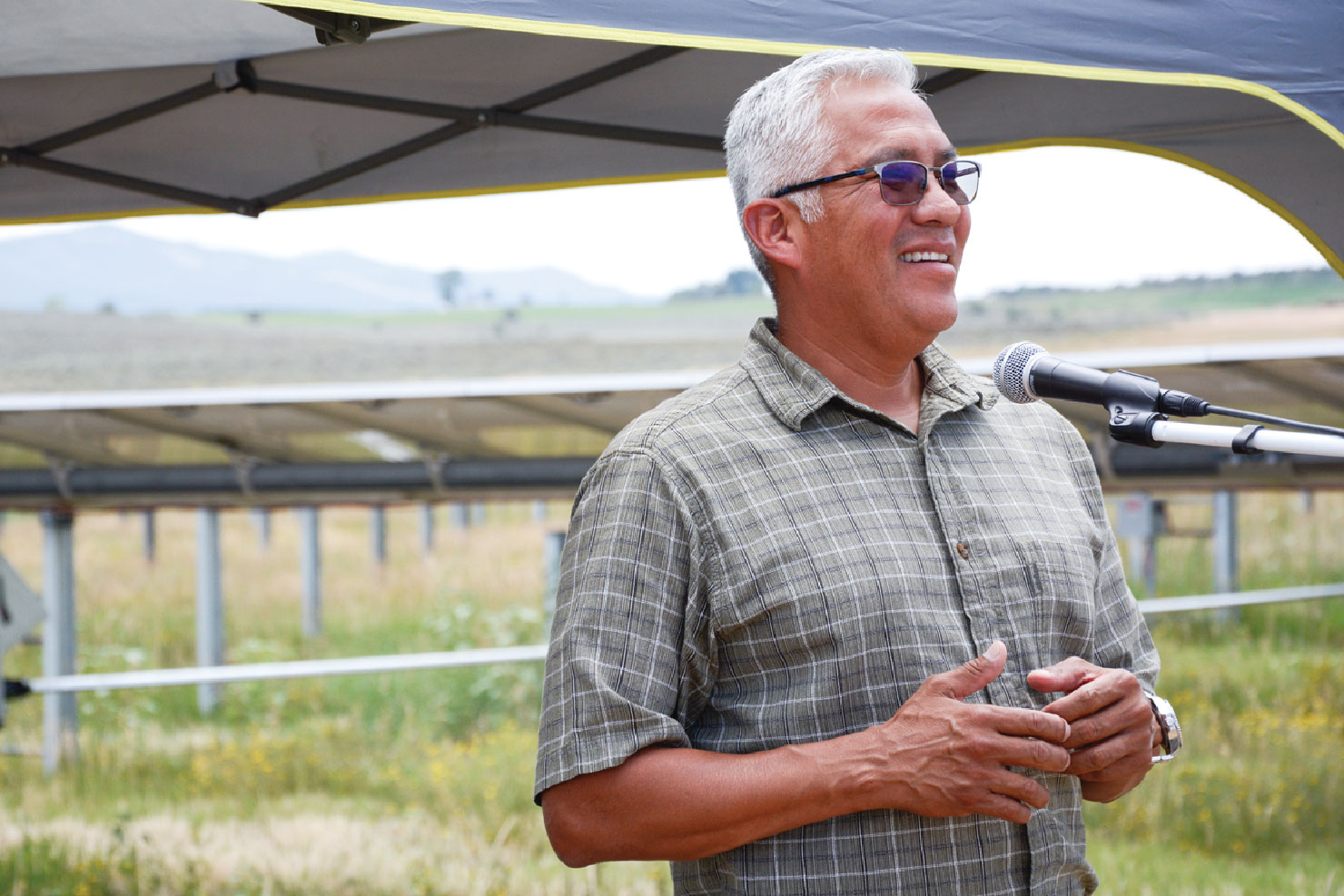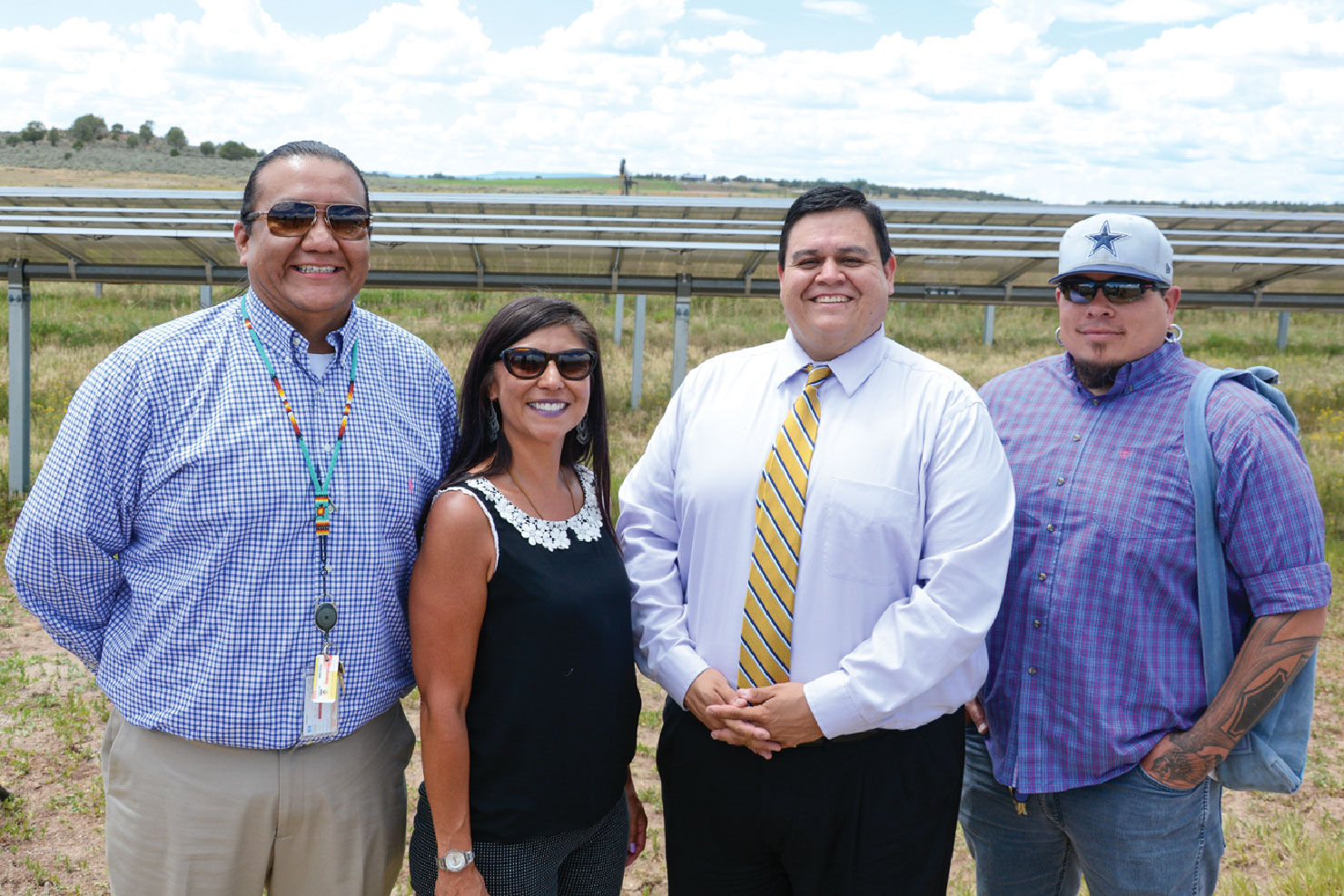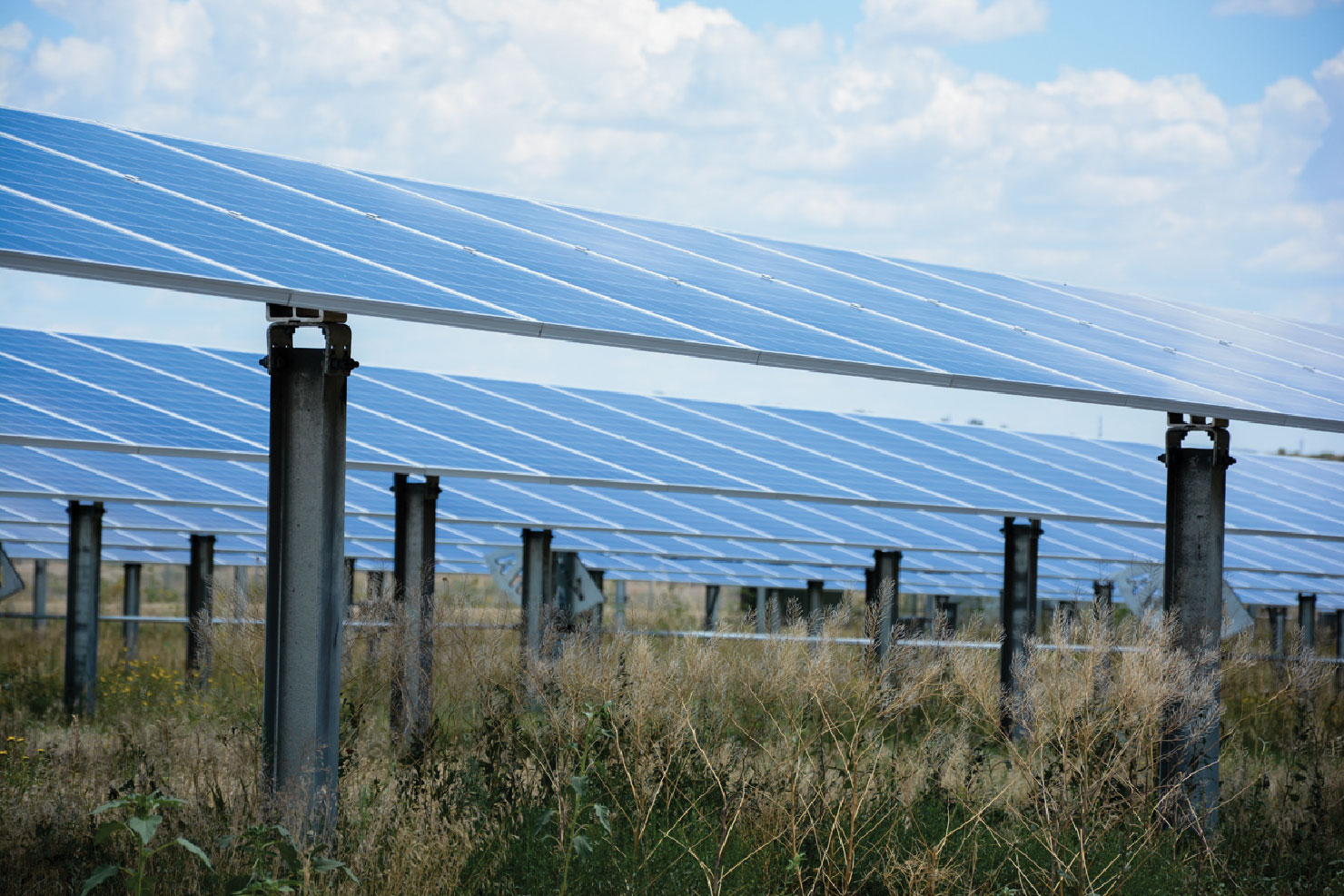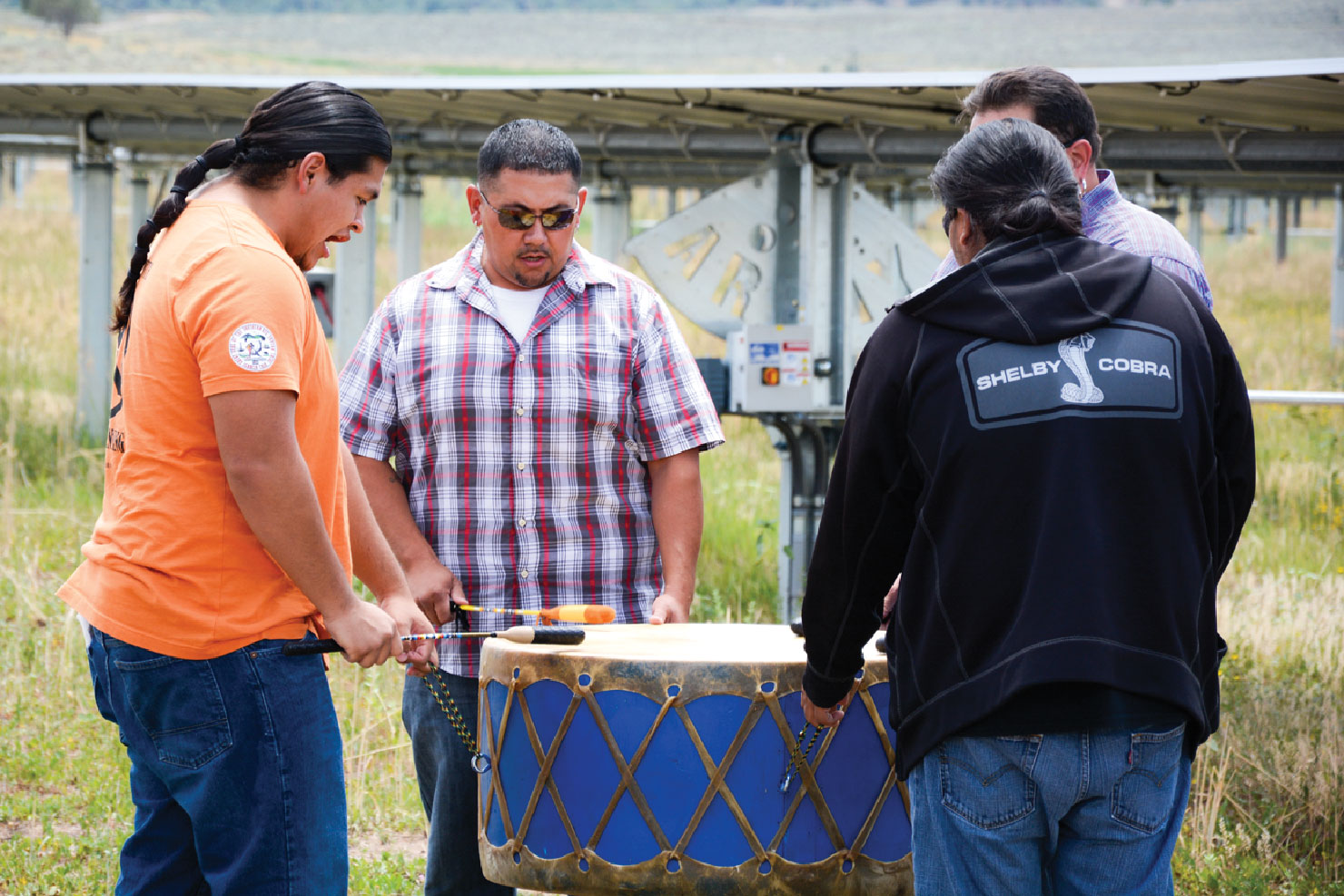Dignitaries from the Southern Ute Indian Tribe gathered together with representatives from the Southern Ute Growth Fund and Southern Ute Utilities Division to dedicate the Tribe’s newest renewable energy venture, the Oxford Solar Plant, an array of photovoltaic panels spread across four acres of tribal land. The dedication took place Monday, July 26 in Oxford, Colo.
“Today marks a significant day for the Southern Ute Indian Tribe, as we make our way into alternative energy,” Councilman Kevin Frost said. “I would also like to point out the juxtaposition of fossil fuels,” he said, gesturing toward a pump jack silhouetted against the horizon. The Southern Ute landscape has been closely tied to energy production in recent decades.
“What a great day for the Southern Ute people,” Councilwoman Lorelei Cloud said. “It’s a great opportunity to use the gift given to us by the creator, the power of the sun.”
The Southern Ute’s Oxford Solar Project is the largest of its kind in La Plata County. LPEA has 7,350 kW of solar installed on its system. The Oxford project is 1,000 kW (14 percent) of that. The SUIT Oxford project produces 0.2 percent of the energy needs of LPEA’s members — enough to power 275 homes. The next largest solar array on La Plata Electric Association’s (LPEA) system is 200 kW and all others are less than 100 kW.
The current array is comprised of 4,000 solar panels and is classified as a ~1 megawatt ground-mount Photovoltaic (PV) project. The land allotted for the project is a full ten acres, this will allow for future expansion. “[The Oxford Solar project was made possible] through successful coordination between a lot of tribal departments,” Senior VP Regional Division, Growth Fund Properties, Patrick Morrissey said. “It was built to expand on,” he said, explaining that future expansion of the solar array will depend on the direction of tribal leadership, and Southern Ute Growth Fund leadership in the years to come.
The energy produced by the Oxford Solar Plant will help to power buildings on the Southern Ute Indian Tribe’s campus in Ignacio, Colo. Ten buildings across Tribal Campus were selected for their location, and their ability to offset a significant percentage of fuel usage by way of electrical savings. Those buildings include: the SUIT’s Growth Fund Building, SunUte Community Center, the Animal Shelter, Construction Services, Construction Services Quonset, Water Resources Building, Education Area Buildings — 1 & 2, Southern Ute Education Center, and the Food Distribution Building.
“In terms of power consumed within LPEA’s service area, 32 percent of that comes from renewable resources,” said Dan Harms, Manager of Rates, Technology and Energy Policy for LPEA. Hydropower is one one of those renewable energy sources contributing to the 32 percent.
“A unique feature of the Tribe’s setup is the tracking system,” Harms said, who explained that by having the solar panels set to track the sun’s trajectory throughout the day, this solar array is far more efficient than one which is solely positioned to catch the sun during a single window of time each day. “I used actual data from the SUIT Oxford solar project and compared that to actual data from 1 megawatt (MW) of other solar arrays around our system. Due to the trackers, the Oxford system produced 57 percent more energy on Friday, June 23, the last day we had without any cloud cover,” Harms said.
“I’m happy to see this take place,” Councilman Tyson Thompson said in his opening remarks. “This is a great accomplishment.”
Together with Ignacio drum group, Yellow Jacket, Southern Ute elder Eddie Box Jr. led the participants in a traditional blessing.
“Renewable solar power will lead to an increase in overall sustainability in energy production, one of the goals of the Oxford Solar Project,” according to the Southern Ute Growth Fund. “Reduced energy costs for the Tribe and an increase in local clean energy will also benefit the Tribe.”
“This is setting us apart from what others are doing in Indian Country,” Southern Ute Growth Fund Executive Director, Raymond Baker said in his opening remarks.
“Historically this land was not good for growing, it is out of the way, it is also near power stations — we did a lot of studies, taking environmental considerations into account,” Baker said in regards to selecting the Oxford site as a viable location for the solar array.
The project was completed by Namaste Solar Electric, Inc. in conjunction with La Plata Electric Association, the Growth Fund Department of Energy, Growth Fund Properties Group and the U.S. Dept. of Energy, Office of Indian Energy.
“I would like to thank the staff for their hard work in trying to find the location and connect to the grid,” Southern Ute Councilman Adam Red said. “We don’t know what technologies the future holds.”
Wind, solar and other forms of renewable energy could be the fastest growing power sources over the next few decades, according to a forecast by the U.S. Energy Information Administration published in Scientific American.
“Perhaps one day, we will make the full transition to renewables from fossil fuels,” Frost said.
Project Timeline: 2012, the Southern Ute Growth Fund started a feasibility study, 2014, $3 million dollar budget included awarded funds of $1.5 million from U.S. Dept. of Energy, Tribal Energy Program/Energy Efficiency and Renewable Energy, Community Scale Clean Energy Projects in Indian Country. 2016, the design was finalized. 2017, the solar array was activated.








